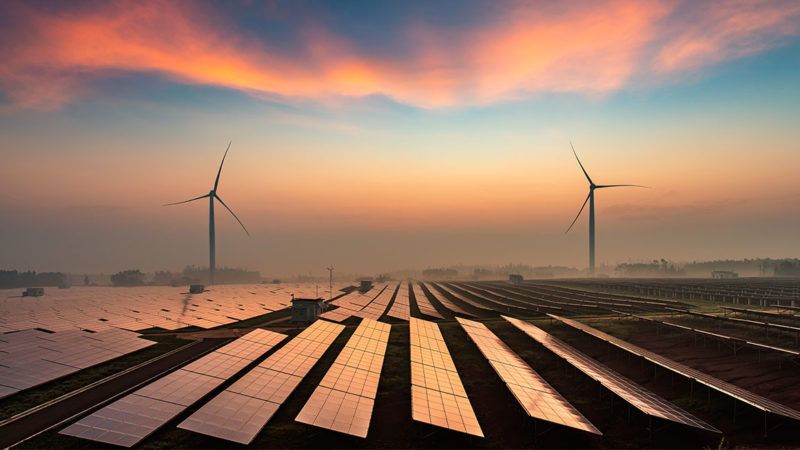Solar and Wind Power Struggle as California Faces Blackouts
The state's electricity grid operators warned in 2019 that power shortages might become increasingly common when heat waves hit in the coming years.

Rolling electric power blackouts afflicted roughly 2 million California residents in August as a heat wave gripped the Golden State. At the center of the problem is a state policy requiring that 33 percent of California's electricity come from renewable sources such as solar and wind power, rising to a goal of 60 percent by 2030. Yet data showed that power demand peaks just before the sun begins to go down, when overheated people turn up their air conditioning in the late afternoon. Meanwhile, the power output from California's wind farms in August was erratic.
Until this summer, California utilities and grid operators were able to purchase extra electricity from other states. But the August heat wave stretched from Texas to Oregon, so there was little to no surplus energy available. According to the San Jose Mercury News, California electricity grid operators warned in September 2019 that power shortages might become increasingly common when heat waves hit in the coming years.
California still has some natural gas power plants that can be ramped up to supply energy when renewable supplies fail. But "some folks in the environmental community want to shut down all the gas plants," Jan Smutny-Jones, CEO of the Independent Energy Producers Association, a trade association representing solar, wind, geothermal, and gas power plants, told The Mercury News in August. "That would be a disaster. Last night 60 percent of the power in [the California Independent System Operator electricity network] was being produced by those gas plants. They are your insurance policy to get through heat waves."
Union of Concerned Scientists analyst Mark Specht, by contrast, told NPR that "the solution is definitely not more natural gas plants. Really, if anything, this is an indication that California should speed up its investments in clean energy and energy storage."
An important fact is missing from this debate: California has been bringing the hammer down on a huge source of safe, reliable, always-on, non-carbon-dioxide-emitting electricity: nuclear power. In 2013, state regulators forced the closing of the San Onofre nuclear power plant, which supplied electricity to 1.4 million households. By 2025, California regulators plan to close the Diablo Canyon nuclear power plant, which can supply electricity to 3 million households.
The problem of climate change, along with the blackouts resulting from the vagaries of wind and solar power, suggests that California should not only keep its nuclear power plants running but also build more innovative reactors designed to flexibly back up variable renewable electricity generation.



Show Comments (113)